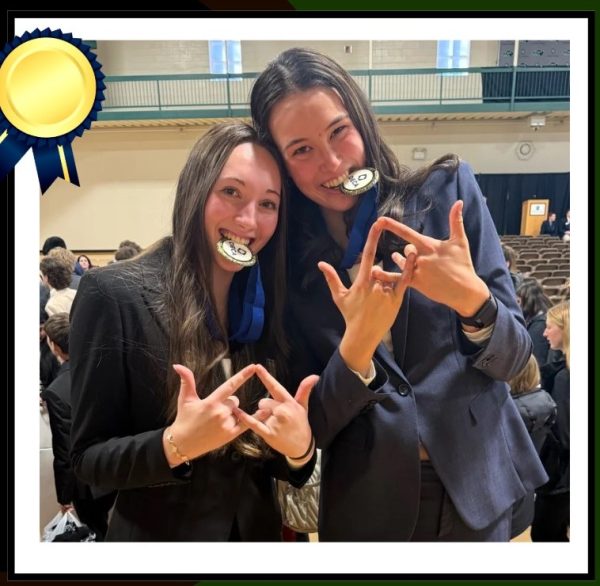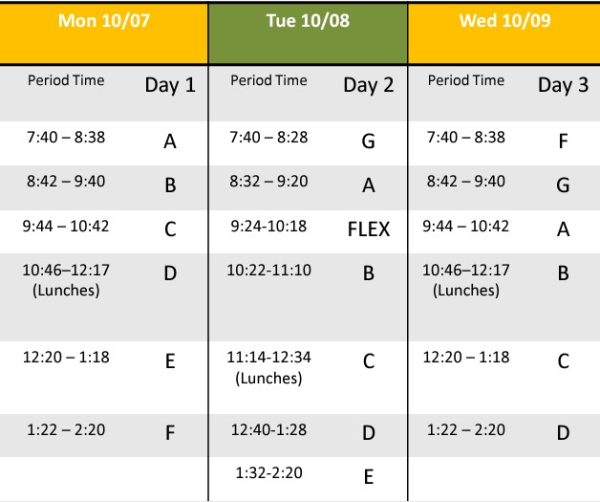Processing the College Process

The college process is a stressful and overwhelming time for juniors and seniors, and it doesn’t help that there’s no clear rulebook of where to begin and how to prepare for the daunting application process.
It all starts with standardized testing. A lot of schools are now test-optional, so they don’t require students to send in SAT and ACT scores unless the student is comfortable doing so. However, odds are that most people will apply to schools that require standardized tests. So which to take, and when?
It’s best to start with the SAT’s and give the ACT’s a try afterward. According to the Princeton Review, both tests include reading, math, English, and an optional essay, but the ACT also has a science section. The ACT also has less time per question; with about the same overall time as the SATs, the ACT has more sections, which leads to added time pressure. Many of the differences between these two tests are subtle, such as the use of a calculator on all ACT math problems and only some SAT math problems. That being said, most students prefer to take both tests once and then retake the test they did better on.
Another option for standardized testing is SAT Subject tests. These test are meant to be taken after the completion of AP and some honors classes in order to demonstrate mastery of a subject to colleges. These tests are one hour long and consist only of multiple choice questions. These tests can be taken at various times throughout the year, but many students prefer to take them in late Spring, as their class is drawing to a close and the information is still fresh. For example, sophomores who take AP biology and want to take the Biology Subject test should take it in May or June of their sophomore year.
Subject tests are not required at most schools, but some schools, particularly highly-selective schools such as Yale and Brown, require two subjects tests from students, so all students should look for the requirements of their schools.
But what about the students who haven’t decided on any colleges yet? It’s a huge task, and it’s not easy to do without personalized instruction, but most students don’t have this option. When trying to decide on colleges to apply to, there is a mountain of choices to consider. How far away should the college be? Co-ed or single-sex? Big or small? Private or public?
For someone interested in a specific major or program, such as pre-med, it’s best to start with colleges that offer that program. However, most students only have a vague idea of what they want to study. So, the best place to start is to tour a few local colleges just to narrow down one’s options. It doesn’t have to be an elaborate tour; it’s only necessary to spend a few hours on some different campuses to get a feel for the different choices. After these tours, one can be more decisive about the different options available.
With general features in mind, one can begin to narrow down cities and parts of the country to look. Many students long for the adventure of college across the country, in California, Florida, or Washington, but it’s important to consider that New England has some of the best schools in the country, so there’s no need to travel for a great education. Travelling to college also adds to the high cost of college, and it leaves a student with fewer opportunities to come home for a weekend on a whim.
For anyone who’s still feeling overwhelmed by narrowing down college choices, there are a lot of resources on Naviance. There is the CollegeMatch program, in which students can enter all of their preferences for various aspects of the college life, and it will generate a list of schools that are good matches. Although this is not a perfect method, it helps to highlight a few colleges that might be just right.
There are also scattergrams, which give a loose estimate of if one will get into a college based on GPA and standardized test scores. These graphs are specific to Nashoba acceptance, and they are a good measure of where one lies in comparisons to students from past years, although they are far from perfect estimates.
A final important fact in considering a college is a major. While it’s normal to go in undecided, it’s important for students to have a general idea of an area they like to study. For example, one probably shouldn’t apply to WPI if interested in liberal arts. In addition, for anyone who has a very specific major, he or she should look at schools that have very strong program in that area in order to receive the best education possible. Guidance can also help with this process.
A final crucial step juniors must take is to ask two teachers for recommendations, preferably before the end of their junior year. Guidance recommends asking one math/science teacher and one history/English teacher, but students should ask the two teachers that they feel know them the best and can advocate for them with a recommendation. There is also a survey on Naviance that must be filled out by students in order for teachers to complete their letters.
The college process seems huge and overwhelming to most, but it can be easily managed through small steps and collaboration with guidance. For current juniors, their main focus should be keeping up their grades and researching the colleges that are the best fit for them.









